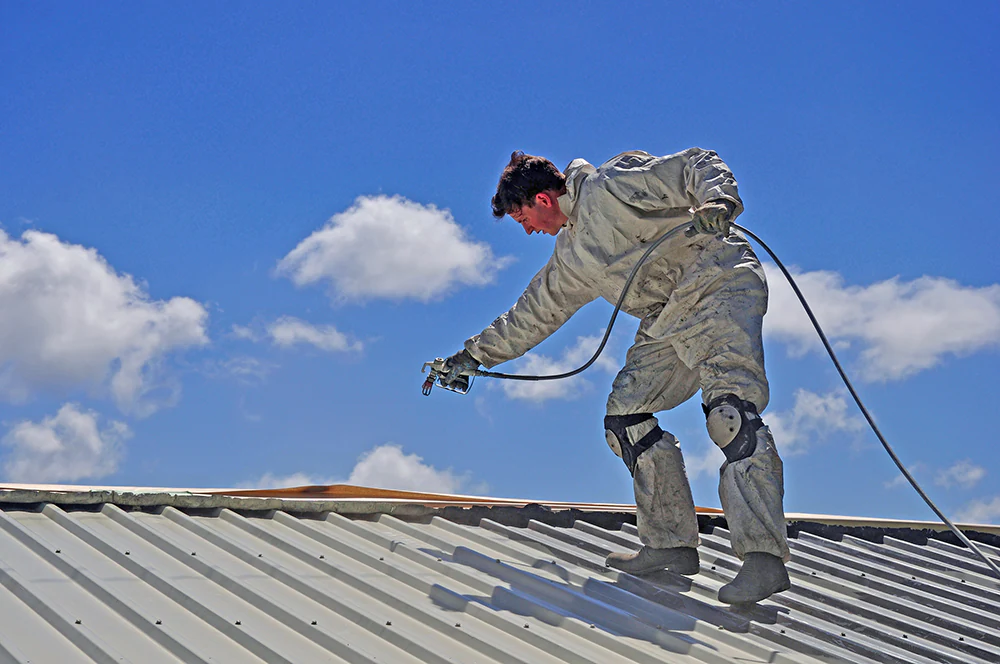
Detroit Heat, Reflective Roofs, and Your Bottom Line
Cool roof coatings for Detroit’s flat commercial buildings are no longer a niche upgrade; they are a frontline defense against relentless heat absorption that drives up energy costs and degrades roof surfaces long before their rated service life expires. On a July afternoon the sun forces a conventional black roof past 150 °F, baking HVAC systems and spiking indoor temperatures across Metro Detroit. A reflective coating flips that equation, bouncing UV rays back into the sky, easing the strain on cooling equipment, and giving facility managers a cost-effective way to protect the existing roof while saving money every billing cycle.
What Is Best for a Commercial Flat Roof?
The best choice for a commercial roof depends on whether you need a quick patch, a full roof replacement, or a comprehensive commercial roof restoration that preserves the entire roofing system. For many low-slope commercial roofs, a fluid-applied cool roof coating bridges torn seams, locks out moisture, and restores lost reflectivity without the disruption of tearing off roofing materials. By rehabilitating the existing roof instead of hauling tons of debris to a landfill, commercial building owners keep business running, avoid major problems like leaks and water damage, and extend the roof’s lifespan for a fraction of the cost of replacement.
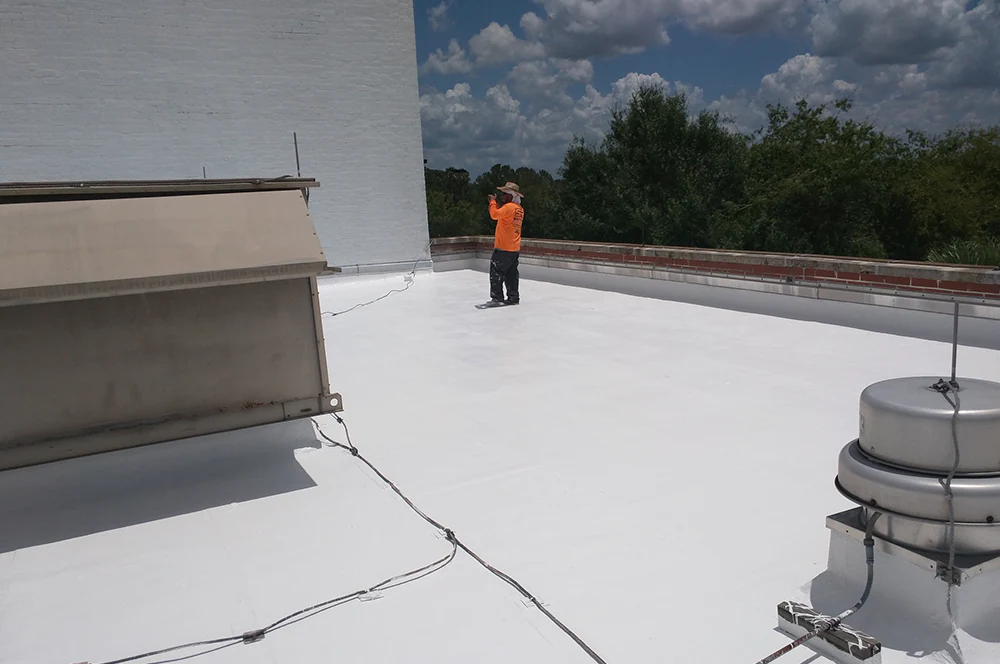
Do Cool Roof Coatings Work on Detroit’s Low-Slope Decks?
Independent field studies show a properly installed roof coating can drop surface temperatures by 50 °F, cutting energy consumption for cooling between 15 % and 25 % over a single summer. Real-world audits in commercial properties along Woodward Avenue confirm that cooling costs plunge when white coatings replace dark, heat-soaking surfaces. The coating’s UV protection also blocks the chemical breakdown that turns asphalt brittle, slowing biological growth such as algae and mold that thrive in warm, moist film. In short, coatings work—and they work especially well on flat roof assemblies where standing water otherwise acts like a solar basin.
How Do I Keep My Flat Roof Cool?
You keep a flat roof cool by combining reflectivity, emissivity, and smart maintenance. A bright white or light-gray coating reflects up to 80 % of incident sunlight, while high thermal emittance allows any collected heat to radiate back into the atmosphere before it migrates into the building. Ensuring positive drainage eliminates moisture that can undermine energy efficiency, and annual rinse-downs clear soot that dulls the finish. When these practices are paired with code-mandated insulation under the membrane, indoor temperatures stabilize even during severe weather swings, trimming both cooling and winter heating costs.
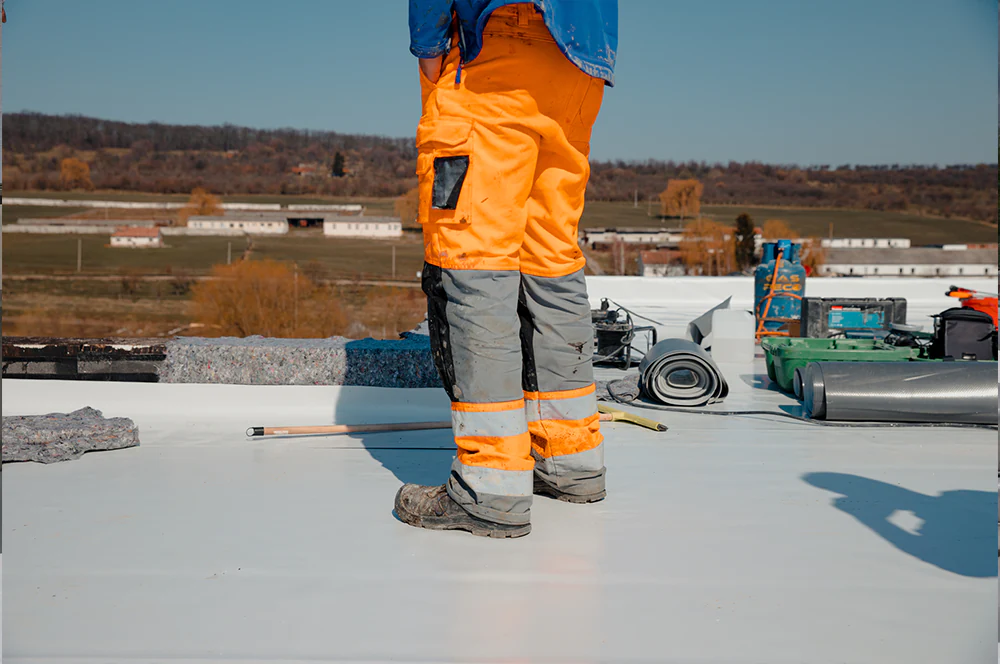
What Are the Two Main Types of Cool Roof Coatings?
Acrylic elastomeric and silicone stand out among roof types of reflective chemistry. Acrylic is water-based, sets quickly, and resists Detroit’s traffic grime, making it the go-to solution where existing coatings are chalking but still firmly adhered. Silicone is solvent-borne, hydrophobic, and virtually immune to ponding water—ideal for metal or modified-bitumen decks that deflect under heavy snow. Both chemistries adapt to different roof size configurations, from 5,000-ft² retail boxes to 120,000-ft² distribution hubs, and both earn LEED certification points for energy efficient design when properly documented by an experienced commercial roofing contractor.
Choosing Between Restoration and Full Replacement
Full roof replacement remains the gold standard when saturation tests reveal widespread moisture or structural decay. Yet most Detroit buildings do not need that invasive surgery; they need commercial roofing solutions that restore function without gutting capital reserves. A cost analysis often proves that roof restoration with a reflective coating delivers the highest return on investment: lower initial cost, faster installation, and no shutdown of tenant operations. Commercial property owners also dodge disposal fees, limit business liability during construction, and align with sustainability targets investors increasingly demand.
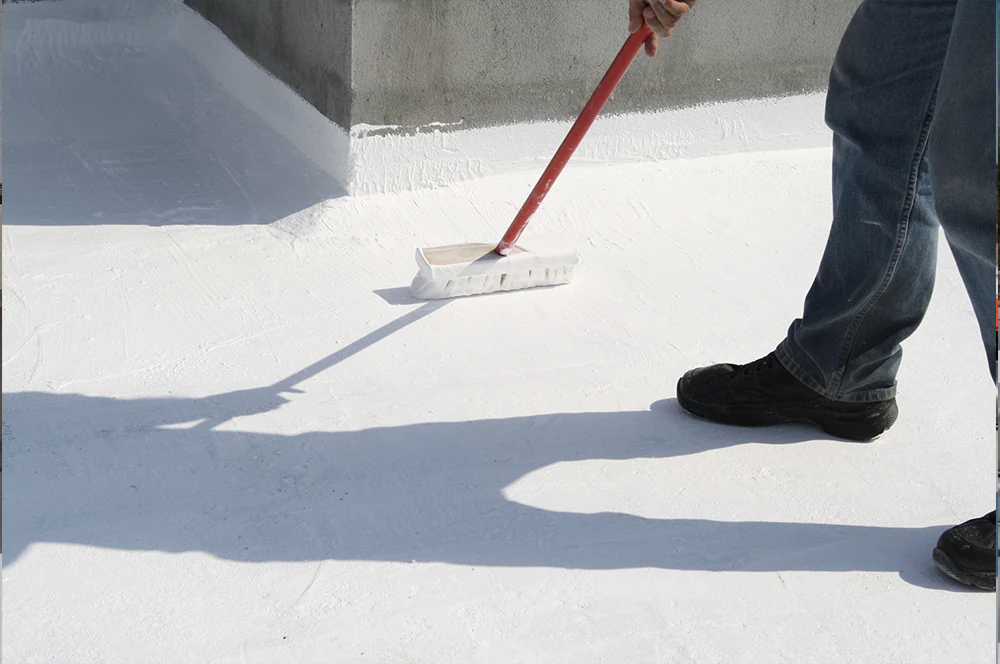
How Roof Coatings Cut Energy Costs and Extend Service Life
Reflective coatings slash cooling loads directly, but the energy savings do not stop there. By stabilizing roof temperatures, they reduce thermal cycling that loosens fasteners and fatigues welds, shrinking repair budgets over time. Less rooftop heat means HVAC systems run shorter cycles, increasing equipment life and decreasing maintenance calls. Over ten years that reduction in energy consumption compounds into tens of thousands of dollars – a powerful argument for finance teams tracking life-cycle cost, not just first-year expense.
Facility Managers’ Playbook for Successful Coating Projects
Facility managers overseeing large commercial buildings face unique challenges: unpredictable weather conditions, aging roof assemblies, and multiple stakeholders expecting quick results. A proven playbook starts with an infrared moisture survey, which pinpoints leaks and maps areas needing localized repairs. Next, thorough power washing strips biological growth and debris, followed by primer designed for the roof’s materials – metal, BUR, or single-ply. Finally, crews roll or spray the coating to the manufacturer’s specified dry-film thickness, ensuring even coverage that will withstand UV rays through Detroit’s harsh winters and sweltering summers.
Sizing Up Cost-Effective Coverage
Project cost scales with roof size, but so does the opportunity to save money. At roughly three dollars a square foot installed, a reflective coating on a 40,000-ft² logistics facility might cost $120,000 – yet the same building can recoup half that outlay in reduced cooling costs within four to five summers. Because the new skin weighs under two pounds per square foot, structural calculations are minimal, permitting is straightforward, and crews can complete restoration without reinforcing joists or adding extensive safety barricades.
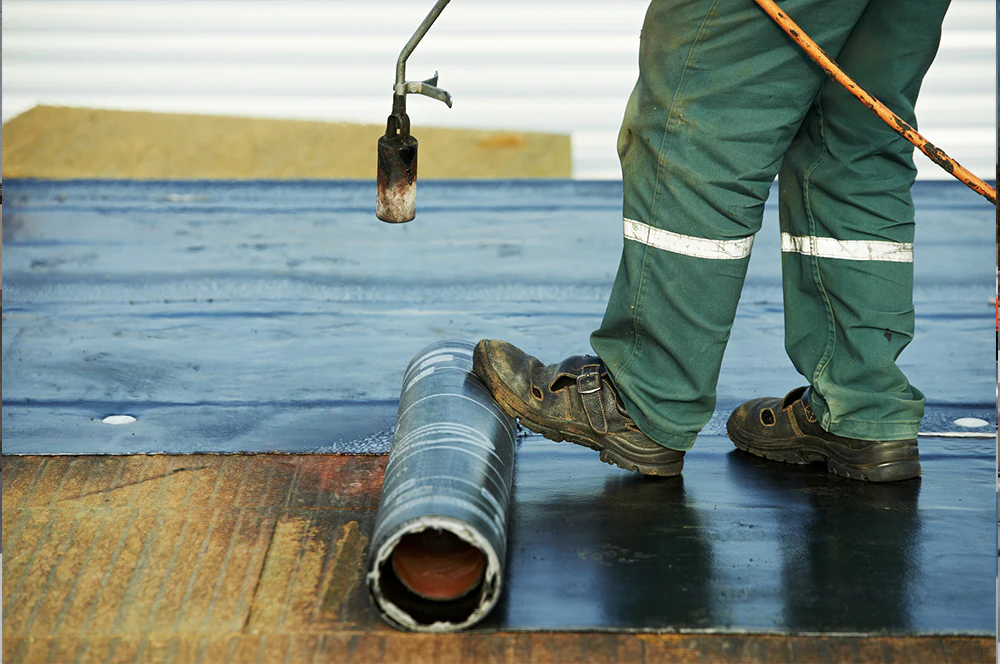
Protecting Against Leaks, Moisture, and Detroit Storms
Coatings cure into a seamless membrane that flexes with thermal expansion and contraction, sealing capillaries where rain or melting snow once infiltrated. That watertight bond protects insulation from moisture, preventing water damage that fosters mold, rusts metal decks, and necessitates emergency repairs. In severe weather—whether lake-effect blizzards or August cloudbursts—a coated roof sheds water more quickly, resists wind-driven debris, and remains more durable than many older systems whose seams have surpassed their design life.
Why Professionals Matter
Although some coatings may seem DIY-friendly in theory, commercial projects require experienced professionals equipped with calibrated spray rigs, fall protection, and the expertise to choose primers that adhere to specific existing coatings. A certified commercial roofing contractor offers written warranties, monitors batch numbers for quality assurance, and has a trained team that can identify hidden issues before they turn into costly surprises. Their crew plans work schedules according to weather forecasts, ensuring each coat cures within the humidity and temperature ranges that enhance adhesion and durability.
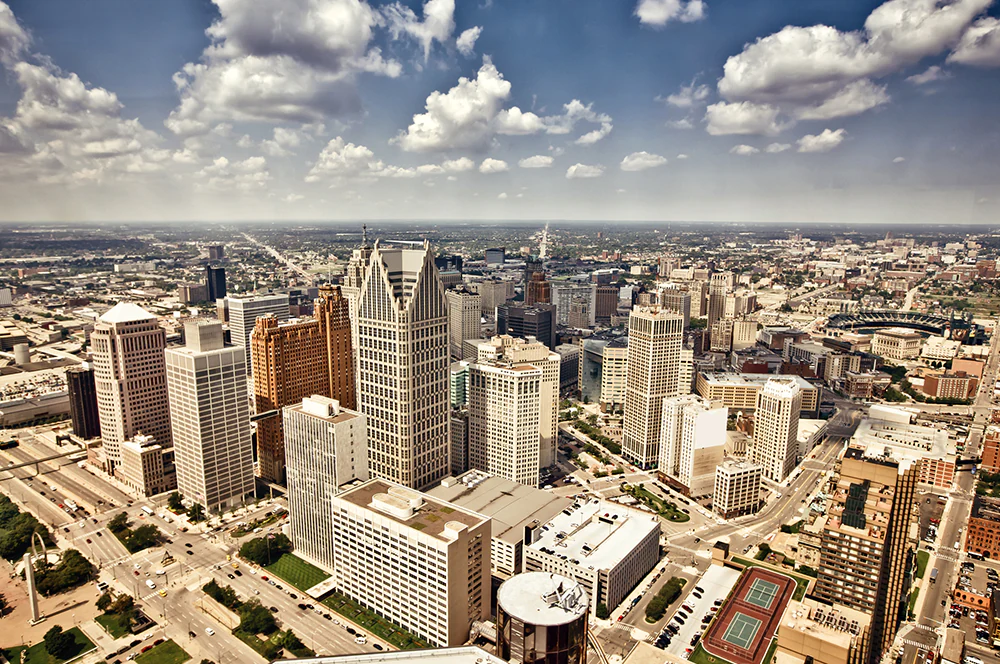
Integration With Building-Wide Energy Strategies
A cool roof alone increases energy efficiency, but pairing it with high-SEER rooftop units, demand-responsive controls, and smart insulation upgrades multiplies savings. Many Detroit owners leverage utility rebates that reward comprehensive solutions; a reflective roof coating often pushes projects over the threshold needed to unlock bonus incentives for aggressive energy-reduction targets.
LEED certification
Those combined measures lighten commercial properties’ carbon footprints, improve tenant comfort, and strengthen a building’s case for LEED certification or other green-building labels that attract modern businesses.
Coatings in Winter? Timing Matters
Detroit’s winter months aren’t suitable for fluid-applied chemistry. Acrylics require steady temperatures above 50 °F and low overnight humidity, while silicone needs at least 40 °F to cross-link properly. Therefore, spring through early fall is the optimal window, although silicone’s moisture-cure behavior allows for late-season touch-ups when unexpected leaks occur. Planning ahead keeps crews off icy surfaces, protects schedules from snow-related delays, and ensures the coating is fully cured before the freeze-thaw cycle begins anew.
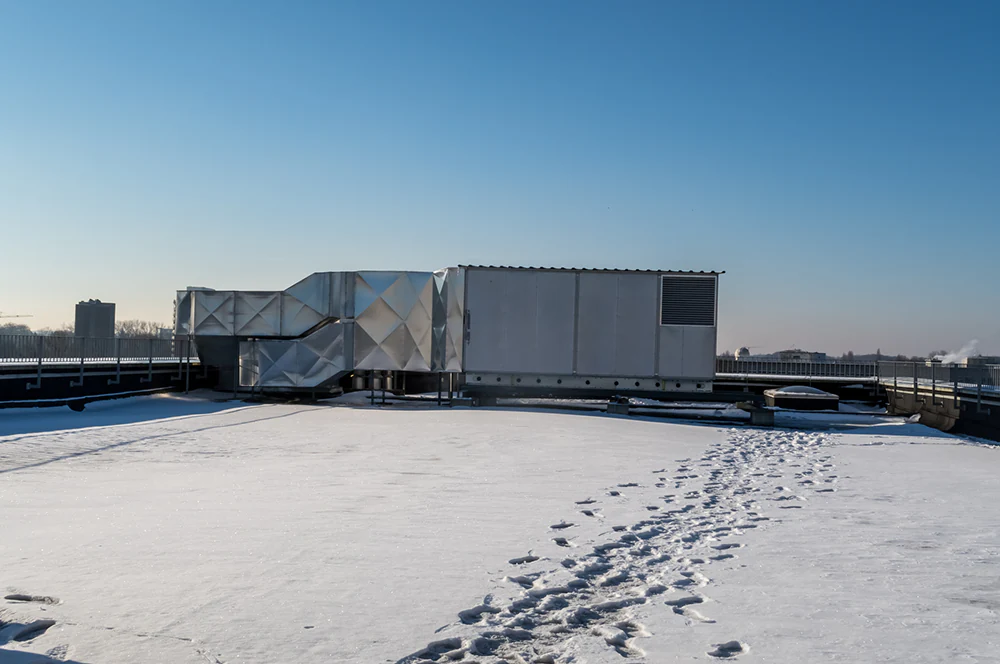
Long-Term Value for Commercial Building Owners
The life of a roof is a marathon, not a sprint; every year you delay replacement without compromising performance is money staying within the business. A quality coating can add ten, fifteen, or even twenty years to the existing roof, transforming deferred maintenance into a strategic investment. If the membrane requires fresh protection down the line, crews can clean and re-coat at a lower cost than the original application—renewing reflectivity and UV resistance with minimal disruption to tenants.
Metro Detroit’s Path Forward
As energy prices fluctuate and climate forecasts predict hotter summers, cool roof coatings stand out among roofing solutions that are both practical and forward-thinking. They protect the building envelope, guard against leaks, reduce HVAC runtimes, and help business owners achieve sustainability goals without the sticker shock of tearing everything down to the deck. In a region where snow loads, lake-effect storms, and intense sun can all strike within a single calendar year, investing in reflectivity is a wise way to restore, extend, and enhance any commercial roof.
Your Next Step Toward Energy-Efficient Resilience
Whether you manage a logistics park in Romulus or a mid-rise office in Midtown, collaborating with a seasoned team provides the assurance that your coating complies with manufacturer specifications and local codes. Roofing Above All’s experienced professionals have restored millions of square feet of commercial roofing across Metro Detroit, customizing each project to suit the roof type, size, and business continuity needs. Reach out to our team today to explore how a reflective coating can safeguard your building, lower energy costs, and extend service life—transforming today’s sunny glare into tomorrow’s savings and sustainability.